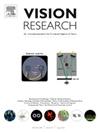Attentional settings based on previous experience affect bias in visual comparisons
IF 1.4
4区 心理学
Q4 NEUROSCIENCES
引用次数: 0
Abstract
Previous experiments in visual comparison have shown that the spatial congruency bias (SCB), a bias to categorise two targets as “same” if they occupy the same location in successive displays, and the overall bias (OB), the average bias across all trials, vary with visual similarity; and that the OB also varies with the type of task being performed. In four experiments, we explore whether these results are best explained by a visual similarity account, an attentional zoom account, or a combination of the two. Using a shape comparison task, we manipulated the visual similarity and predictability of the target displays by varying the local position of the target letter, either between different blocks (i.e., predictable; Experiments 1a and 2a) or within a block (i.e., unpredictable; Experiments 1b and 2b); additionally, we varied the distractor letters such that they were the same between the to-be-compared displays in most of the trials (Experiments 1a and 1b) or they were different in every trial (Experiments 2a and 2b). Under conditions of low interference, the predictability of visual information has no effect on the OB, or on the SCB, but this may be because attentional demands are low in these conditions. As predicted by the attentional zoom account, the SCB is influenced by predictability when peripheral interference is high. These results suggest that both similarity and attention play a role in visual comparisons.
基于先前经验的注意设置会影响视觉比较中的偏见
先前的视觉比较实验表明,空间一致性偏差(SCB)和整体偏差(OB)随着视觉相似性的变化而变化。空间一致性偏差(SCB)是指如果两个目标在连续的展示中占据相同的位置,则将它们分类为“相同”的偏差;并且OB也随着执行的任务类型而变化。在四个实验中,我们探讨了这些结果是由视觉相似性解释,注意力缩放解释,还是两者的结合来解释的。使用形状比较任务,我们通过改变目标字母的局部位置来操纵目标显示的视觉相似性和可预测性,或者在不同的块之间(即可预测的;实验1a和2a)或在一个块内(即不可预测的;实验1b和2b);此外,我们改变了干扰字母,使它们在大多数试验(实验1a和1b)中被比较的显示之间是相同的,或者在每个试验中是不同的(实验2a和2b)。在低干扰条件下,视觉信息的可预测性对OB或SCB没有影响,但这可能是因为在这些条件下注意力需求较低。正如注意变焦说所预测的那样,当外周干扰高时,SCB受到可预测性的影响。这些结果表明,相似性和注意力在视觉比较中都起作用。
本文章由计算机程序翻译,如有差异,请以英文原文为准。
求助全文
约1分钟内获得全文
求助全文
来源期刊

Vision Research
医学-神经科学
CiteScore
3.70
自引率
16.70%
发文量
111
审稿时长
66 days
期刊介绍:
Vision Research is a journal devoted to the functional aspects of human, vertebrate and invertebrate vision and publishes experimental and observational studies, reviews, and theoretical and computational analyses. Vision Research also publishes clinical studies relevant to normal visual function and basic research relevant to visual dysfunction or its clinical investigation. Functional aspects of vision is interpreted broadly, ranging from molecular and cellular function to perception and behavior. Detailed descriptions are encouraged but enough introductory background should be included for non-specialists. Theoretical and computational papers should give a sense of order to the facts or point to new verifiable observations. Papers dealing with questions in the history of vision science should stress the development of ideas in the field.
 求助内容:
求助内容: 应助结果提醒方式:
应助结果提醒方式:


